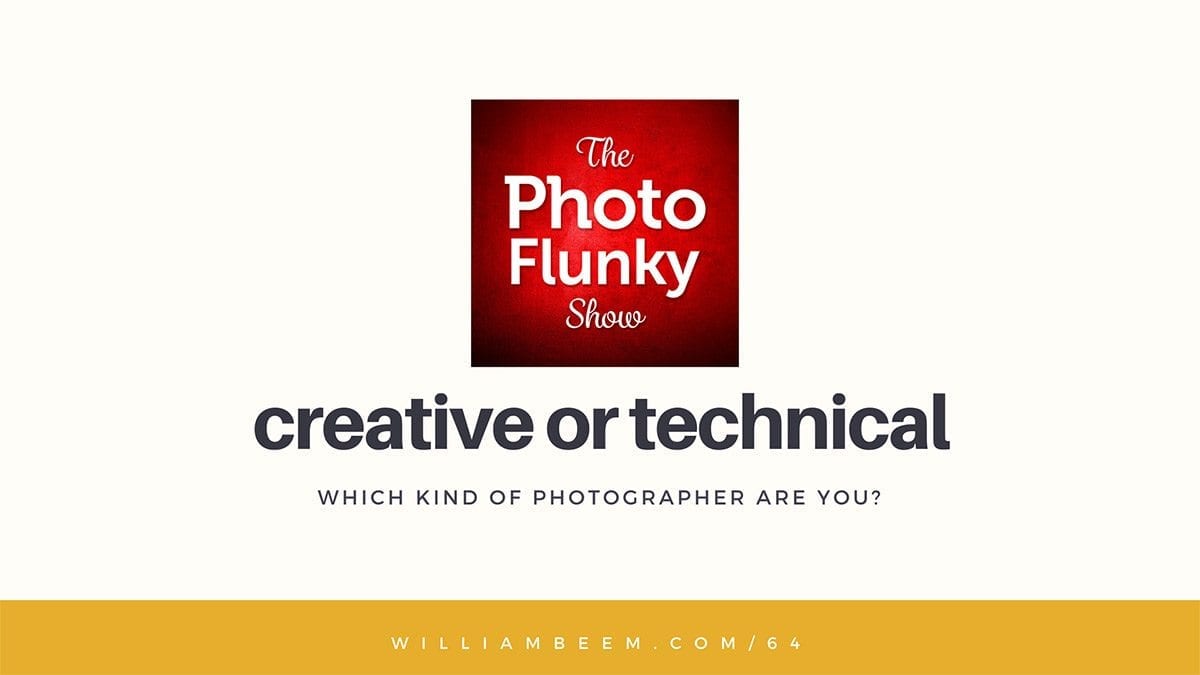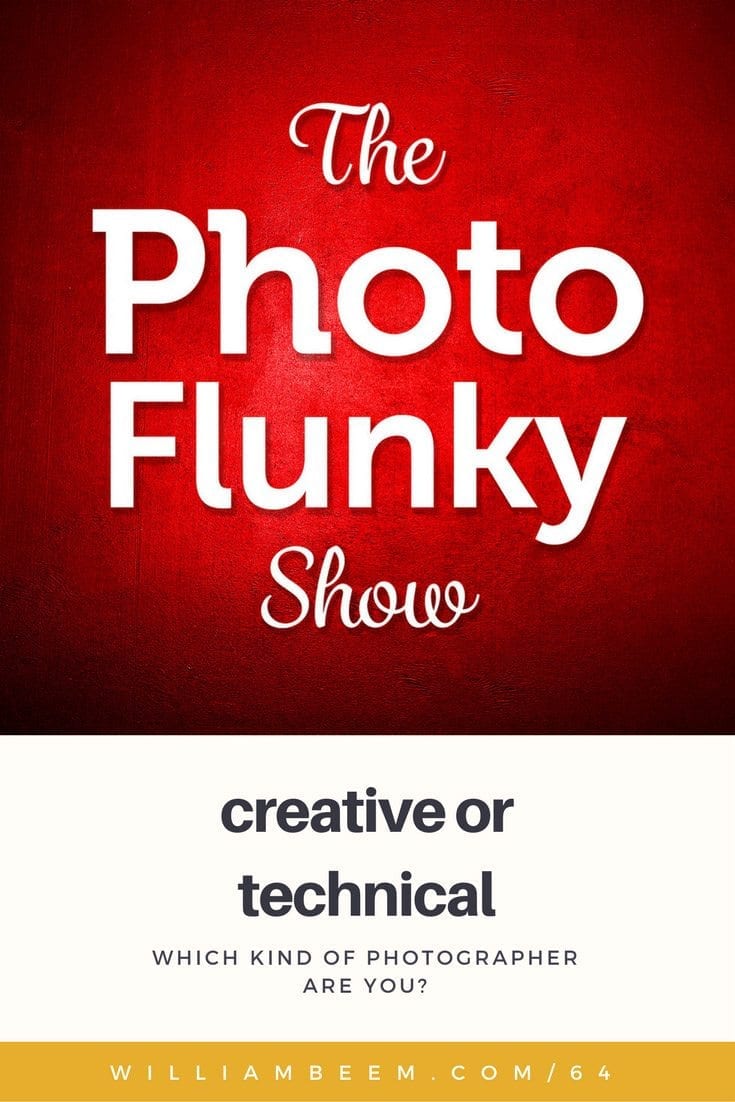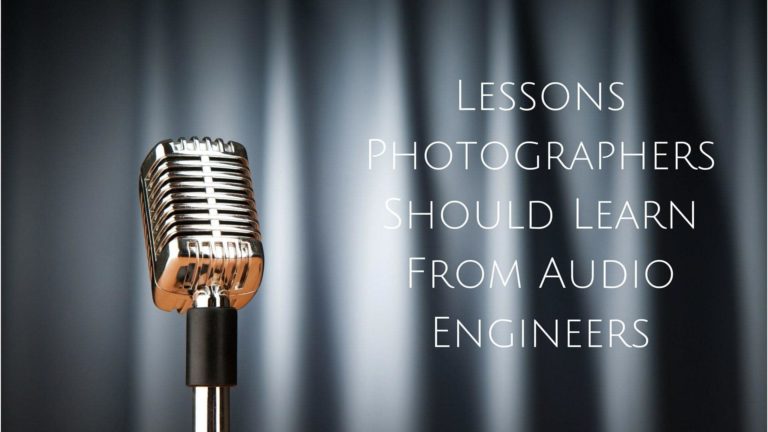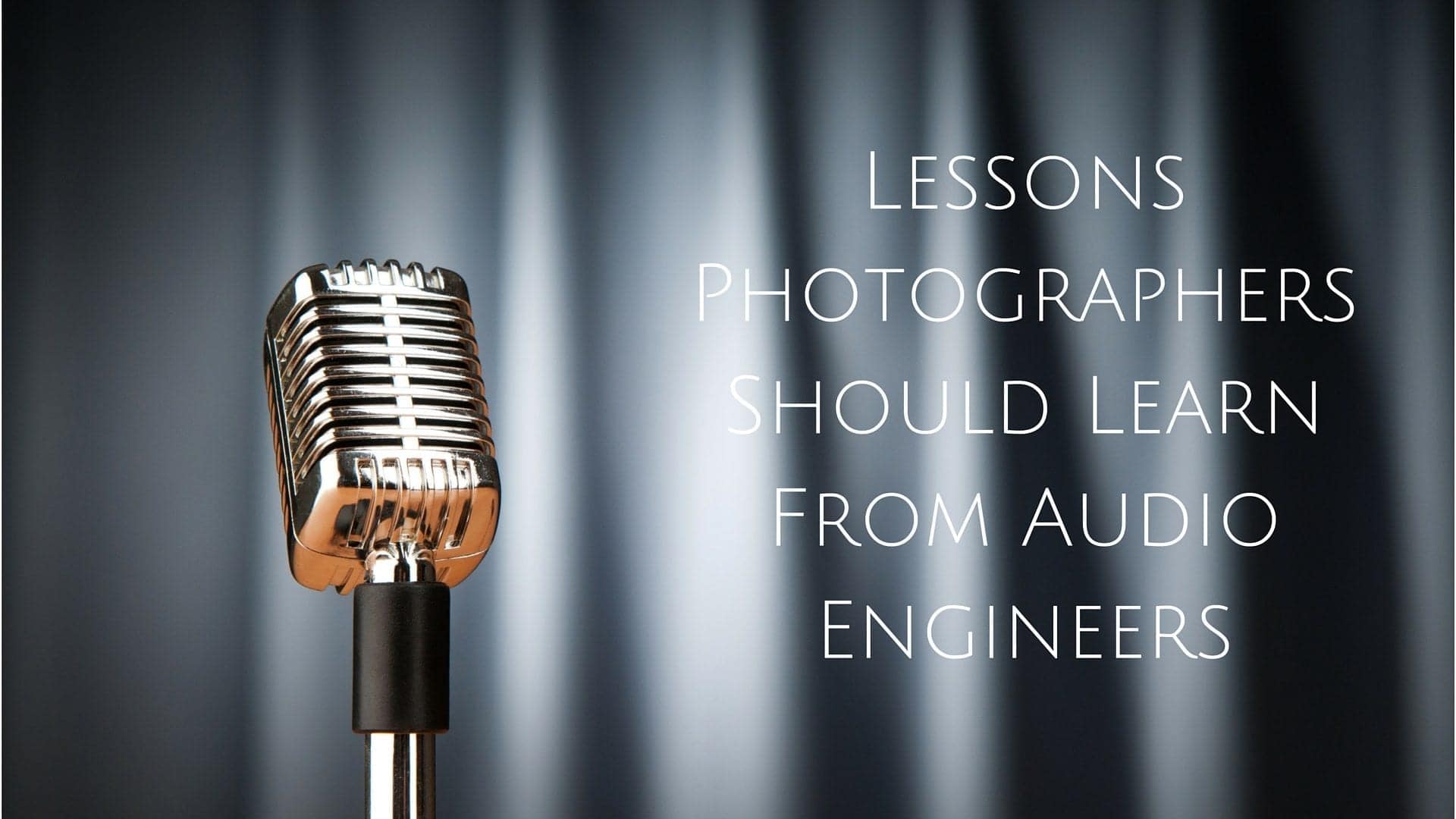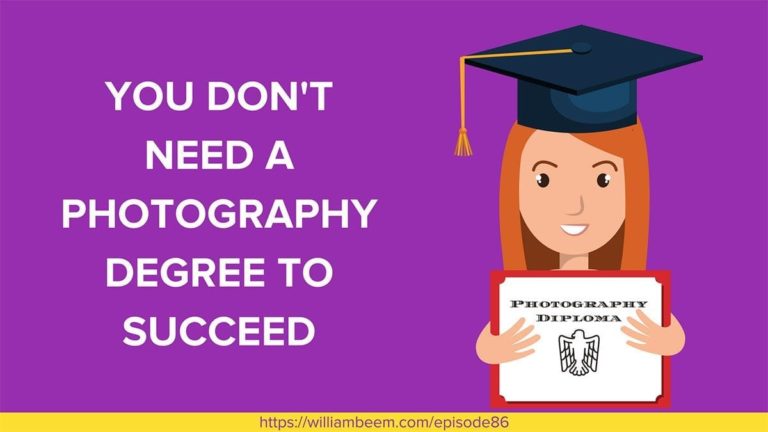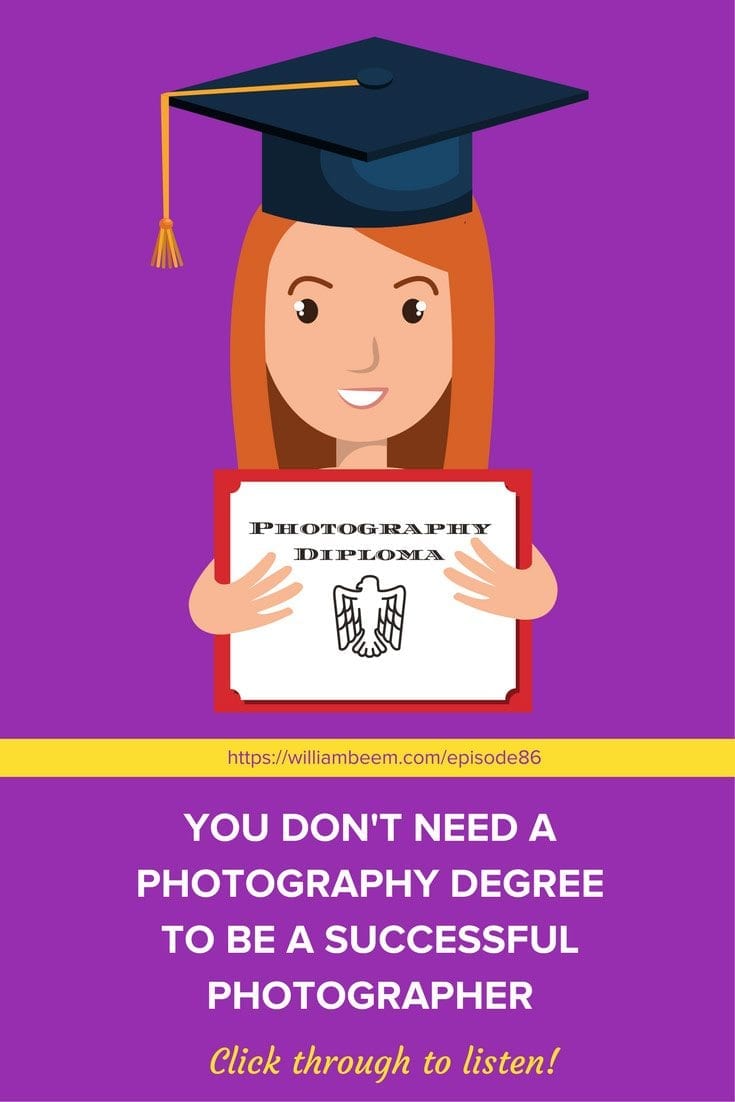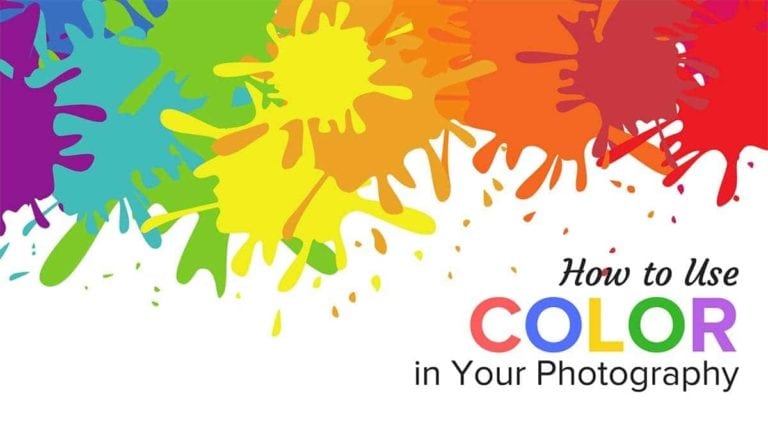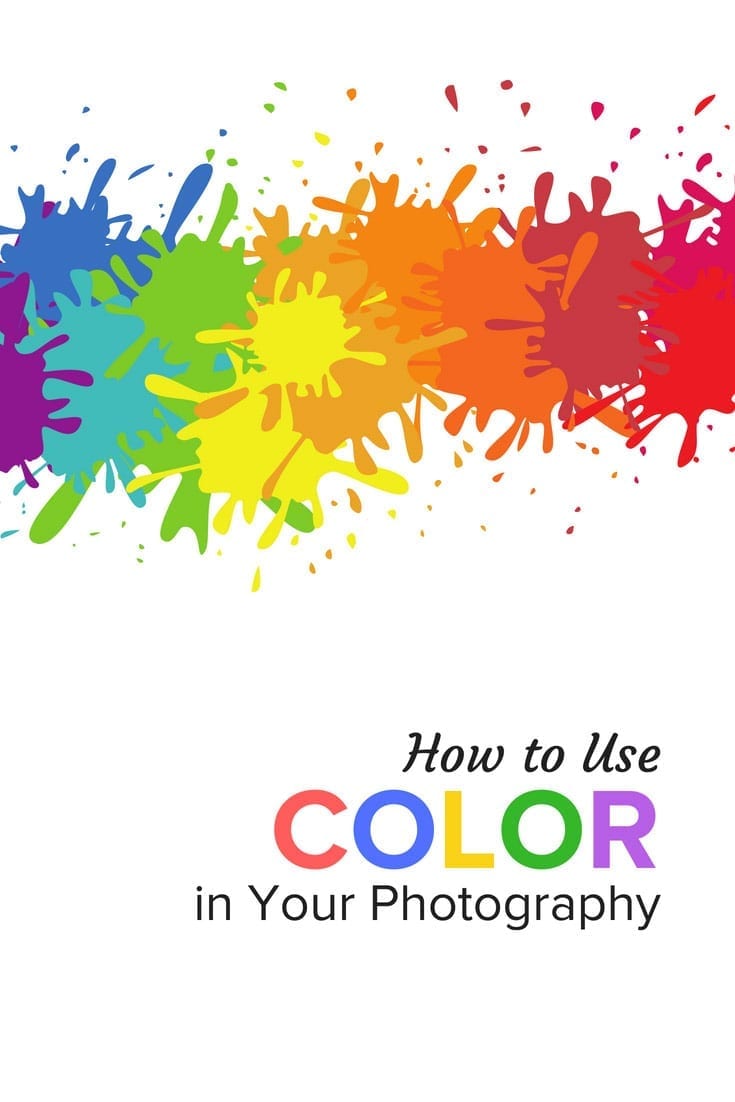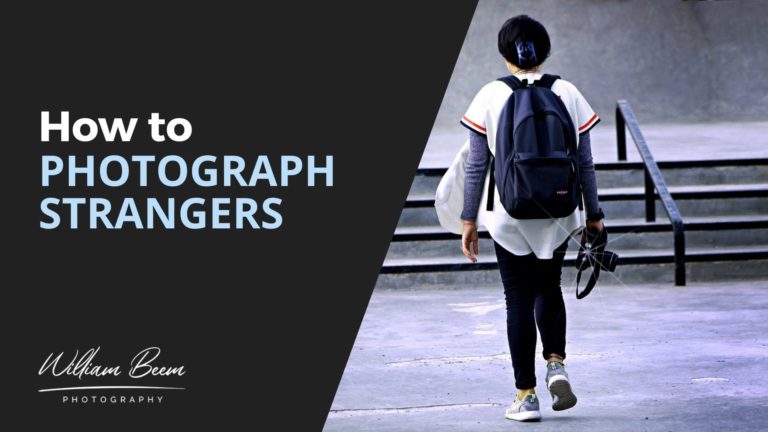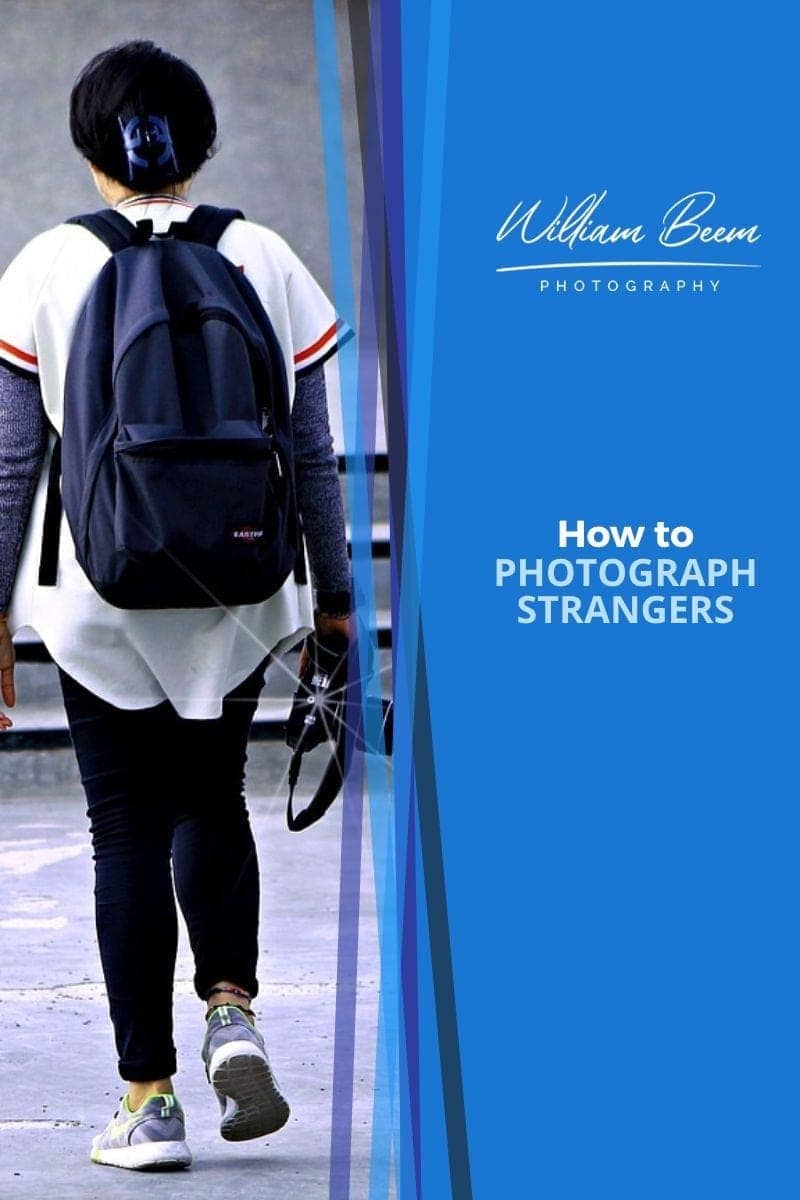Affiliate Disclosure: We earn a commission if you purchase through one of our links at no additional cost to you.
Understanding the Differences Between a Creative or Technical Photographer
We talk about the creative or technical photographer in this episode of The Photo Flunky Show. Which aspect of photography is more important, and how do you cultivate the side where you’re weakest?
Is creativity or technical skill more important? Lee and I approach photography from opposite sides. She’s more creative than I am and I’m more technical.
Yet we both agree that the technical side is the foundation. Nothing could be more frustrating than having a clear vision of a photograph you want to create, but no idea how to make it happen.
On the opposite side, plenty of photographers approach things from a technically perfect perspective, creating flawless photos without much creativity or imagination.
Are You a Technician or an Artist?
It isn’t wrong to be either, but are you the kind of photographer that you want to be? If not, what are you doing to strengthen you craft?
Put another way, are you passionate about your photography? Does it drive you to improve?
Lee thinks that technical people aren’t passionate, but I disagree. I don’t think that technically minded people have to be any less passionate than creatively minded people. We may have different ways of getting to the same place, but it doesn’t mean we’re any less passionate or driven to reach our objectives.
I raised this question based upon something I heard Joel Grimes say at Photoshop World a few years ago.
If you’re an artist with a camera, you’ll get noticed; if you’re a technician with a camera, you’ll blend with the masses. In the end, it really doesn’t matter what new technical advancement is on the horizon.
I get what he’s saying, but I have one fundamental disagreement. I see the technical and creative minds as motivations. To me, it doesn’t matter what motivates you.
That’s art.
What Do You Wish You Could Do Better?
Whether you are a creative or technical photographer, there is always something you can do better. It doesn’t hurt if you are happy with your current level. Take some time to explore what you know.
When the time comes, you’ll know to press toward some kind of advancement or improvement in your photography.
Is there one thing you wish you could do better as a photographer? Doesn’t matter if it’s creative or technical. Let us know in the comments.
Tell us your “one thing.”
Transcript
THE PHOTO FLUNKY SHOW: Episode 64
Links to subscribe to the show:
You can find links to this episode and all of the other ones at photoflunky.com
iTunes: williambeem.com/itunes
Google Play Music: williambeem.com/googleplay
Stitcher Radio: williambeem.com/stitcher
Blubrry: williambeem.com/blubrry
Keep up with us on social media:
Twitter: @photoflunky
Facebook: William Beem Photography
YouTube: William Beem Photography
You can find links to this episode and all of the other ones at photoflunky.com and of course if you’d like to subscribe, we would love that. Go to at williambeem.com/itunes or williambeem.com/googleplay or williambeem.com/stitcher or even williambeem.com/blubrry
William: Hi, welcome to the Photo Flunky Show. This is episode sixty-four.
Today’s topic – we are going to be talking about: Are you a creative or a technical photographer? I know. There’s a little evil laugh.
Lee: It’s not evil.
William: It’s not evil?
Lee: Mmmm…
William: Hi, my name is William Beem.
Lee: Hi, my name is Lee Beem.
William: And Lee is the one with the evil laugh.
Lee: But I’m not evil.
William: She’s not evil.
Lee: I’m really sweet.
William: That’s why I married you.
OK, before we get started, like I said – welcome to the Photo Flunky Show. I want to let you know that show notes are going to be available at williambeem.com/episode64 and of course you get a free transcript there if you want one.
And there are links to subscribe either on that page or on photoflunky.com.
And I’ve got two other little things to share with you. One is that I’ve got a free ebook for you. It’s called Creative Portraiture. It kind of goes over some of the creative ideas; not the technical ideas that you need to consider when you are taking portraits. It is available for free. You can go to williambeem.com/freebook or you can use your phone to send a text message. Send CPBOOK to 33444 and it will ask you your email address and it will send it right off to you. So if you’re not in a place where you can just easily go to the web page, send the text message. It works.
And finally, if you’ve got a Mac and you want to try out a different raw engine, I’m going to recommend MacPhun Luminar. I have been having a blast with this software and my coupon code is BEEM, just like my last name. It will save you $10 off the cost of Luminar. It is a wonderful program and by the way, the same code is going to work with anything else from MacPhun for it to give you a ten per cent discount.
I have really been having a good time with this. They just recently came out with a new released version of it. They’ve got more presets, they’ve got more features involved and they’ve kind of tightened it up and I’m having fun with it. I’m going to be doing some videos on Luminar, but you can also just get a free download first if you want to try it out and then after that if you decide that you want to buy it, put in the coupon code BEEM. I get as little commission from that, but at the same time it saves you money.
Lee: I have a question about the discount. Is that …
William: There’s a Q and A part of this show now.
Lee: There’s a Q and A always in this house! Lots of them!
Is that ten bucks for Luminar and ten per cent for everything else?
William: The way it’s working right now is it’s $10 off for Luminar and it’s also $10 off for Aurora HDR 2017, which is their HDR software, but it is a ten per cent code for the other products. So for example if you want to get the Creative Kit or some of the programs individually in the Creative Kit, it will give you ten per cent off of those programs.
Lee: OK. I just wanted to make sure I understood correctly. Because I’m a Windows user so sometimes the stuff kind of goes through my head without resonating.
William: Actually I’m kind of glad you brought that up because I’ve always talked about MacPhun being a Mac only software and the truth is they are coming out with a Windows version now.
They have not yet put them out but Luminar is going to come out with a Windows version and Aurora HDR 2017 is going to come out with a Windows version and I think that the Creative Kit applications are also going to come out with Windows versions. Don’t hold me to that yet because I want to go back and read my notes from the folks at MacPhun.
Lee: I wonder if they’re going to make you buy it again if you have like Windows and Mac?
William: You know typically? I can’t speak for them. I don’t know the answer to that, but typically if you bought one version, then you get a download link for either/or, or both. You might have a limit on maybe you can only load it on two computers. I don’t know what MacPhun was going to do.
Lee: I was just wondering out loud. It wasn’t really a question as such.
William: Well, the thing is there are times when people want to switch from Mac to Windows or from Windows to Mac and they want their software to work and they don’t necessarily want to go buy it again. So most of the vendors I know will allow you to download it in either option.
No Linux version that I know of, but Mac or Windows. Like I said, MacPhun is starting to come out with some Windows software. I know it’s in development now. I have already heard that from folks at MacPhun.
Lee: I’m really happy about that because I’m a Windows user, but I like the stuff. I love watching what you do with yours.
William: I think you’re really going to like it. I’ll make sure that I come up with some interesting videos for you.
Lee: I’ll appreciate that.
William: Right, so much for the Q&A section of our show that I didn’t plan on.
Lee: I know. It was impromptu!
William: For our discussion today we’re going to be talking about creative versus technical photographers.
Lee is very much a creative person at heart. You’ve gone through … did you go to art school or was it something you’ve done?
Lee: I did actually do some art school. I didn’t stay there because there was too much theory. And I just wanted to make things.
William: And I’m on the other side. I’m a technical kind of person. I started off in high school and I was always planning on going to photography school. Photography was going to be my career and then that was back at the point when personal computers started coming out. I had an Apple then I had the old TRS80 computers and I just got totally hooked into that. My mind is technically wired. Logical and process and things of that nature. And I got back into photography and I really enjoyed it because there is a technical aspect to it. If you don’t understand the technical aspects, no matter how creative you are, you can’t necessarily capture the photos you want to do.
Lee: I agree with that. You have to know how to apply it.
William: But on the other hand, if all you have is technical abilities and you don’t have a creative sense or soul or know how to make a good composition, you’ll make technically perfect photos that nobody wants to see.
Lee: Well, they’re cold and sterile.
William: The first question we really wanted to go over today: Is creativity or technical expertise more important? You cannot ignore either.
Lee: I would say – this is going to shock you – but I would say technical is probably more important than creative to be able to take photos. But to be able to take good or engaging photos or something that really is different and unique, creativity is more important. But I think the technical side is the basis for being able to take photos at all.
William: Let’s say that I were more on the creative side. I can think of nothing more frustrating than knowing exactly what shot I want to get and then not knowing the technical expertise to capture it.
Lee: Exactly.
William: So you’ve got to have the technical interest. It doesn’t have to be overboard. You don’t have to do everything, but if you want to get your creative vision out, you’ve got to know the technical capabilities to get there. And that’s not just necessarily the camera. That could be lighting beyond available light. I know that there are people out there that say, “Oh well I’m an available light photographer. I don’t have to bother with strobes and flashes and stuff like that.”
Lee: Well I am but not because I don’t have to bother, it’s because I’m so darn lazy.
William: See, I’m the kind of person who says, well I’m also an available light photographer and I carry this flash with me so light is available.
Lee: There you go.
William: I know how to use it. Those are the kinds of things that … I take it back. They claim that they are natural light photographers! And my first statement is: All light is natural. There is no such thing as artificial light. There is artificial sweetener. There is no artificial light. Light is the same. It’s photons. No matter what you’re doing, whether it comes from a flash, a light bulb or the sun, it’s all the same thing. It’s the generation may have been artificially stimulated, but it’s still light. Light is light.
Lee: No preservatives. No additives.
William: No preservatives, no aftertaste.
Lee: No law suits.
William: Well I don’t know. I’ll probably get sued for this now. I probably just upset somebody.
Lee: Oh good. That will get them to pay attention.
William: I think what we’re coming up with though is the technical expertise is necessary. Not that it’s more important, but it’s a fundamental; it’s a requirement. You have to be able to understand how to use your equipment and gear to capture photos and if you’ve got a creative vision, like I said, nothing can be more frustrating than saying, “I know exactly what I want, but I don’t know how to do it.”
Lee: Yes. I agree.
William: That’s like you getting in the car and saying, I know exactly where I want to go, but damn it I can’t start it.
Lee: Yeah, that would be me, too.
William: I’m picking on her because she is from Britain and people walk and take trains there. They don’t necessarily have a lot of cars.
Lee: Over here I run.
William: Actually there are plenty of cars there, but nobody drives them, apparently.
Lee: No, people drive them. They just cost too much.
William: I thought you told me when you get to London you can’t really drive anywhere.
Lee: Well, no not anywhere, but it doesn’t make any sense to drive and there are places where you cannot take a car.
William: Alright, I’m getting off topic because I like picking on my wife.
Lee: That’s OK because we like to play.
William: Alright, so let me throw this one at you. And this is going to be not necessarily at Lee, but at everyone who is a photographer: Are you a technician or are you an artist?
Lee: Well technicians aren’t weirdos so everybody knows that I’m on the arty side.
William: This kind of question really comes up. I’ve watched Joel Grimes at Photoshop World a few times and he puts this question forward. Yes, you technically know what to do, you execute it and you can do it over and over again. You’re a technician. Congratulations. But if you want to be an artist, you’ve got to have a little something more.
Lee: You’ve gotta feel it.
William: Well that’s where your creative side comes in.
Lee: There’s passion in art. There’s not passion in technology.
William: Uh….?
Lee There is, but it’s not passion. It’s enthusiasm. It’s dedication. There are other things that are there to the same extent.
William: The reason I’m kind of giving that ummm, is because since I got hired on recently for a new job, one of the things the recruiter really liked was that I was passionate about the work that I do.
I get what you’re saying. The ability to change the settings on your camera, to understand the technical aspects – the lighting ratios and all that other stuff – it’s fun. I like it. That’s not the end result. That’s not the part that you’re passionate about. Or at least in my mind I don’t think that’s the part you should be passionate about.
I think it’s good to know it. I think it’s satisfying that you can do it, but the passion, I agree with you, kind of comes from the creative aspect of what you’re developing.
Lee: Is it head or is it heart? It’s that simple for me.
William: You lead with your heart.
Lee: I do. I really do. But I am not ignoring the importance of understanding the how-to and that is where the technical side is your foundation. You have to have that at least to a certain extent. At the very least, you have to have an understanding of the technical aspects to the degree that will allow you to accomplish what you want to achieve. And that might be very basic; very effective at a basic level of technology, but you need to understand it.
William: Well that leads us into our next question. What do you wish that you could do better?
Lee: Right now, nothing. Because I am absolutely content with where I am right now. I think I’m taking great photos because I’m not trying to impress people with them, but I am certainly drawing attention with them.
William: Oh yeah.
Lee: That is really – I’m finding it fulfilling. So I have gone through waves where I have had a drive to learn something and to master something new. But right now I’m just coasting on the stuff that I feel. I am not trying to learn anything else so right now, what could I do better? Nothing. For me I’m in my kind of perfection zone for the moment. And that is not going to stay there forever, but I’m loving it.
William: See I’m the other way around. I’ve got the technical aspects down. What really is driving me are the creative aspects and I’m looking at other people’s photos and what I like and what I don’t like and I don’t necessarily want to copy what someone else has done. But I am thinking of things that really aren’t or don’t have anything to do with the camera or the lighting. They are the creative aspects.
Like where am I going to get the wardrobe? Who is the right model for the shoot that I want to do? What is the right location? Or do I shoot somebody and composite them onto a background later?
Do I shoot somebody here at home and we put up the paper backdrop and then cut her out or him out and put them on something else?
I think all of those are acceptable things to do. I mean I’ve seen a lot of really wonderful composite photographs. It’s kind of a … I want to tell a story. It’s not so much that I want to be a photographer and I want to know all the technical aspects. That’s just there. I want to tell a story. I want to make something that somebody says, “Wow!”
Lee: Yes.
William: And I don’t always succeed.
Lee: See I love your story telling take on it. Right now I have a story. I’m living a story and the photos are not really telling it as much as pulling people in to join me and follow along as I’m going. And it sounds like one and the same, but to me it’s very different. I wish I knew how to better explain it.
William: I think I understand how to explain it and it’s something that works for me as well. The photograph is not always the story itself. The photograph may be there to support the story that you’re telling. And we do this quite a lot where we’ll use a photograph with articles that we’re writing, we’ll use it with social media and it’s like the photograph is a background or a complement to the message that we’re sending off.
You want to take the right photograph. I love photography as a form of art in itself. But it’s not the only way I want to use photography and I think that’s what I wish I could do better, is find out ways to use my photography to tell a better story. And that comes with the creative aspect of it. Like, where do I get these elements and components to bring into my photograph so that the story comes out?
Lee: Yeah. I think mine right now is almost – I don’t want to say emotional – but it’s more on the motivational side and kind of just bonding with people.
William: See mine is actually going towards fiction, because the stories that I’m talking about, like where do I get these elements and components to put them together? It’s not that I’m telling somebody’s story, like I’m doing photo journalist kind of thing; this is where I’m making up a story. And the photo is part of it.
And that’s where the creative side … I want to get better at the creative side, but some of that is just a little bit of hustle. You’ve got to go out and you’ve got to find things. You’ve got to be a producer; that is I guess the right phrase for it.
Lee: That’s true. I mean you have this vision in your mind and you really need to take your dream and put it into a photo frame.
William: And I don’t always succeed.
Lee: Is it head or is it heart? It’s that simple for me.
William: And that kind of comes back to the part why we started this off saying, is it creative versus technical? And I don’t think that’s really the case. You obviously need to have both, but how do you get the technical and the creative aspects of your photography to support your overall mission or story or whatever it may be?
Lee: I think either/or are very successful, depending what you’re doing. So my overall take on this is that you need to have the know-how so you cannot ignore the technical, but if you lean really heavily on the creative and you want to abandon it, my photos are not technically perfect – I can assure you they are so from it – but I’m happy and they are effecting and serving the purpose for which I intend them to serve.
Likewise if you want to take technically perfect photos, I think that is also a good thing. It really needs to work for you. You are always going to need some technical know-how, but beyond that … what works for you?
William: I think what worked for me is I took a lot of technical photos, learning the technical aspects; things that I didn’t plan on showing anyone. Because I needed to use those to learn. I needed sometimes to go places and take technical photos of a travel story and sometimes I needed to do portraits. I needed to understand the lighting and the ratios and which light modifier did I use? Those are photos that I felt free to make mistakes because I can learn from my mistakes as much as from my successes – probably more so.
Lee: Oh, much more so from mistakes!
William: So basically those are test shots. And those are the technical aspects that I’m getting into. But they are also creative aspects because especially when I get into the lighting, how you want to show something off, the lighting has a very big … it’s a very big component. Obviously we can’t do anything without the light.
One of the lessons I heard recently from another photographer talking about portraits is there are really three elements that kind of come down into it.
You’ve got your subject, your background and the light. And if you start paying attention to all of those as you’re working through it kind of helps you both with your technical and your creative aspects. At least with portrait photography. But always, you’re looking at your subject, your background and your light.
Even if you’re doing travel stories. You don’t want to take …let’s say that you’re doing food photography. You don’t want to take food photography in bad light or with a busy or unattractive background. So it’s almost anything you go through.
Subject, background and light.
Lee: See I get a kind of cheat-easy way to deal with light because I’m not really that technically minded when it comes to photography. So I look at something and it just doesn’t feel right and if I’m not sure why and I know it’s to do with light – which usually you do – “William?” and he’ll tell me what’s wrong.
It’s easy!
William: Well you know, usually the easy answer is move! Yeah. You’re shooting it from the wrong angle. You move over here.
Lee: I usually figure that. I mean today we had to move for a different reason. It wasn’t photo related, but it sort of reminded me as we were doing it. My eyes are very sensitive to light and I had move to sit on the other side of a table because I couldn’t see. It was hurting my retinas.
William: Now when we watch Tové, our daughter, do this a number of times. She wants to take a picture of something that is backlit by the sun. And we say, “Did you get a nice silhouette?”
She said: “How did you know?”
Sometimes the greatest asset you have creatively and technically is move like three feet to the left or right or something like that. And it completely changes how you see your subject. Maybe sometimes you don’t necessarily have the room to move, but I’d say that’s a small percentage of the time.
Usually there is someplace else you can be.
Lee: But I love watching teens doing that. Because they do eventually figure it out, but you kind of want to let them figure it out for themselves before you interfere. Because you do not want to tell a teenager that they are doing it wrong. You do not.
William: No and I’m happy to report last weekend we were at Walt Disney World where she was trying to take a photo of a fountain and she figured out, oh if I move over here I get a better photo.
Lee: But what I loved the most is like they take a photo and it’s backlit so they get a silhouette so what do they do? They take another one to see what was wrong with the phone. And they take about five, six, seven, eight of them and then figure OK. Something is not working here. And she turned and looked at us and before we could say anything she said, “What if I move over here?”
We kind of nodded. So she’s getting it.
William: She is getting it. But that’s your best advantage to help your creative and technical … move! Move around your subject. Move around your light.
You don’t have to stay in the same spot. Or as, also at Photoshop World, I’ve heard Jay Masel say a number of times, “Move your ass.”
Lee: Yeah because if your jeans don’t wiggle, your photos might suck.
William: Thank you so much for listening to the Photo Flunky Show. As I said at the beginning show notes are going to be available at williambeem.com/episode64 and of course there is a free transcript of the show there.
You can subscribe to us on iTunes, Google Play Music and Blubrry, Stitcher and who knows what else. There are some links on the show notes and of course you can go to photoflunky.com to check out this show on the player and of course all of our back episodes.
And finally don’t forget to claim your free copy of Creative Portraiture at williambeem.com/freebook. Or if you’re out and about and you’ve got your cell phone with you, send a text CPBOOK to the number 33444
It will send a note back, ask you for your email address and the book will be on the way.
Thank you! We’ll see you again next week.

